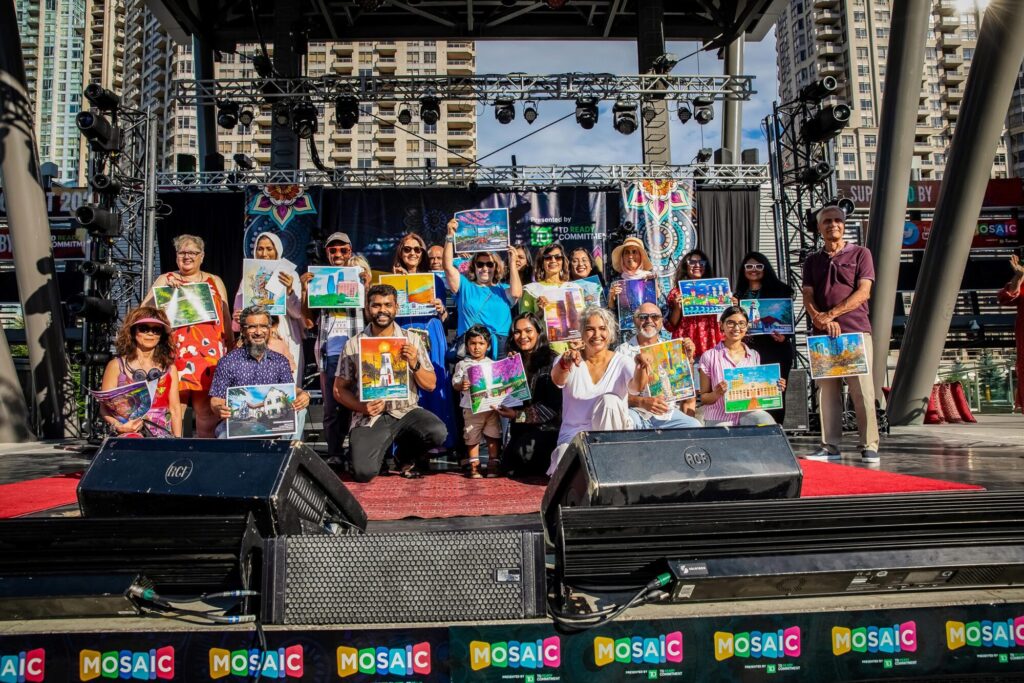A 7,000-year-old culture is reflected in the modern face of Mississauga.
About 25 percent of Mississauga residents claim South Asian ancestry according to the 2021 Canadian census, a term that refers to people from the eight countries framed by the Himalayas, Karakorum and Pamir mountains: India, Pakistan, Sri Lanka, Bangladesh, Bhutan, Maldives, and Nepal.
While South Asian immigration to Canada dates back over a century, the majority of Mississauga residents arrived from the 1960s onward.
Between 1961 and 1971 Canada’s South Asian population grew from about 6,800 people to 68,000 people, with about half of them settling in the Greater Toronto Area (GTA).
This was a well-educated group of newcomers; doctors, academics, financiers and entrepreneurs who moved to Ontario’s growing suburb for greater career and economic opportunities.
They brought with them urban sensibilities about art, food and the business of mixing it up with a diversity of cultures, having come from a place that boasts 43 languages and a rich history as one of the world’s earliest civilizations.
People such as Lata Pada, raised and educated in Mumbai (formerly Bombay) who, after studying science at the University of Bombay, moved alone to Montreal at the age of 17 to marry Inco geologist Vishnu Pada in 1962. The couple moved first to Thompson, Manitoba, then Indonesia and in the 1980s to Sudbury along with their daughters Arti and Brinda.
Along the way, Pada continued to train, perform and teach Indian culture and dance in the northern Canadian mining communities where she and her family lived, while establishing a reputation in India.
In 1985, Pada was scheduled to perform on tour in India and her husband and teen daughters made plans to join her for an extended vacation.
That never happened. Vishnu, Arti and Brinda Pada died aboard Air India Flight 182 on June 23, 1985, after a bomb exploded over the Atlantic Ocean, 190 kilometres off the coast of Ireland, killing all 329 people onboard. It was the deadliest terrorist attack in Canadian history.
Lata Pada became an advocate for Air India families, pushing the Canadian government to investigate the bombing.
She also directed her grief and energy into her art, splitting her time between her new home in Mississauga and India where she immersed herself in the Bharatanatyam, a classical Indian dance form that originated in its Hindu temples.
In 1990 Pada founded Sampradaya Dance Creations, specializing in classical and contemporary Bharatanatyam, a dance form that uses very specific movements of the feet, hands, head, eyes, cheeks and mouth to tell its stories, many rooted in India’s ancient and iconic epic tales.
From the very beginning, Pada toured North America and India, building a reputation as one of the world’s foremost practitioners of Bharatanatyam.
Pada became the first South Asian artist to receive the Order of Canada in 2009 and in 2011 India honoured her with the Pravasi Bharatiya Samman, the country’s highest honour for Indians living abroad.
Her dance studio, Sambradaya, located on Ridgeway Drive just north of Dundas, has continued to grow and is now the largest Bharatanatyam dance studio outside India.
Other South Asian artists followed, gaining recognition here and abroad.
Current Sambradaya executive director Jasmine Sawant and Shobha Hatte co-founded the SAWITRI Theatre Group in 2003, alongside original artistic director Shruti Shah and company administrator Nain Amyn. SAWITRI specializes in presenting theatrical works that are South Asian, with an emphasis on plays about women and works created by the next generation of South Asian playwrights and performers.
In 2021, SAWITRI created the Mississauga Multilingual Fringe Festival, which is held annually in August and features works in languages such as Hindi, Marathi, Punjabi, Urdu and English.
Asma and Arshad Mahmood moved to Mississauga from Pakistan in 1999 and immediately became immersed in the South Asian artistic scene. Asma, a visual artist whose work examines identity, memory and representation, quickly established herself, being named Artist of the Year at Toronto’s Masal! Mehndi! Masti! Festival, at the time the largest North American festival celebrating South Asian culture.
In 2006 the Mahmoods created the Mosaic Festival to celebrate contemporary South Asian visual artists and performers. From there they founded the Canadian Community Arts Initiative, a non-profit to host events that inspire cross-cultural dialogue and promote a sense of pride in residents.

Contemporary South Asian visual artists. (Photo courtesy of Mosaic Festival)
In addition to the Mosaic Festival, held every August in Celebration Square, the Mahmoods created Rock the Coliseum, the longest-running free all-ages music festival in Mississauga, and the Mississauga International South Asian Film Festival.
The Indian film industry was also a source of inspiration for music producer and songwriter Vikas Kohli who in 2011 created the Bollywood Monster Mashup to coincide with Toronto hosting the Indian International Film Festival.
After acting as an impromptu publicist for young South Asian artists, Kohli created the Monster Masterclass, a business and marketing mentorship program for professional artists to help them promote their music and art.
You can hear more stories about the people and events that helped shape Mississauga via our podcast, We Built This City: Tales of Mississauga, available on your favourite podcast platform or from our website.
